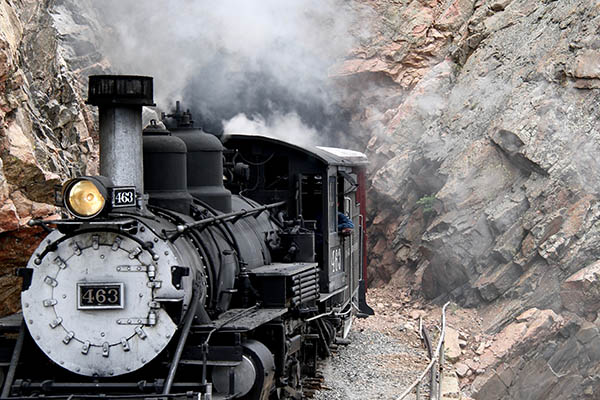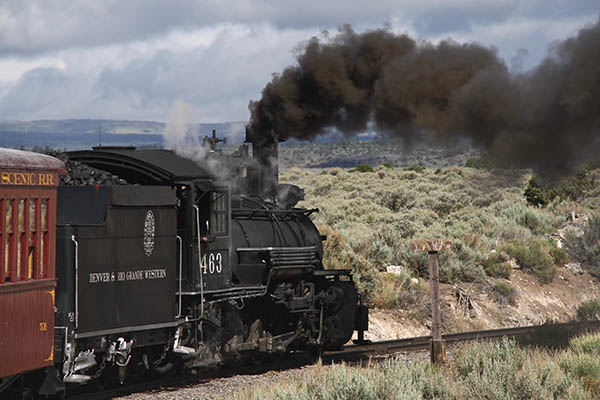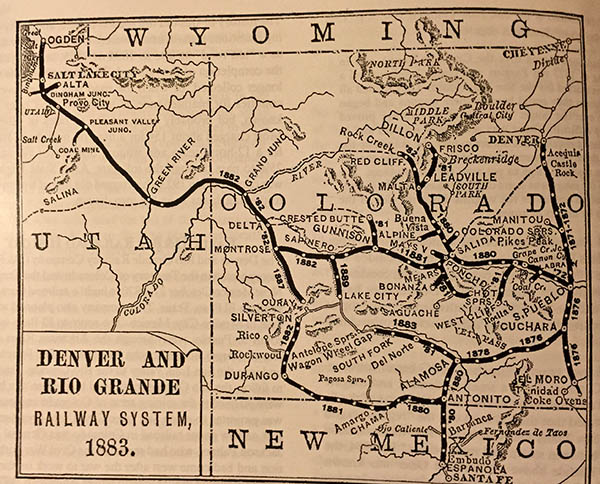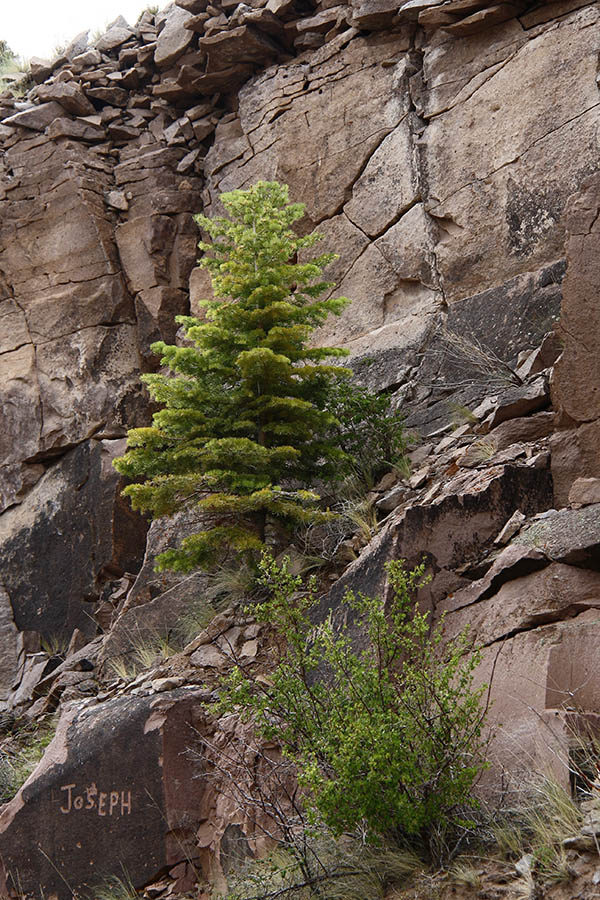
A gentle rain of cinders descends upon passengers in the open-air cattle car. Shifting side to side, now a hard lurch, has you reaching, drunk-walking to the beat. People sway in time to the rails and the rails play a tune older than wax-cylinder recordings. Engine Number Four-Sixty-Three chuffs black, riot-grade smoke as the tracks gradually rise into the tailings of the Rocky Mountains in northern New Mexico and southern Colorado.

Fire is the driving force behind the Cumbres & Toltec line. The tender hitched to Four-Sixty-Three glistens with dark, crumbling coal trailing a peat-tane scent. This is the good stuff, before coal became clean and beautiful. The tracks steepen; Four-Sixty-Three’s breathing becomes labored. The chuffs are farther apart in time but not distance. The fireman shovels more coal into the boiler. Steam pressure rises, pile it on man, let’s get this iron horse moving.



We climb higher, waxy shrubs and rabbits give way to deer and pines. The air cools and each sigh from Four-Sixty-Three’s smokestack hangs in the air marking the exact spot it escaped the inferno. The little train spews water vapor from several ports. It drools water near the drive wheels, jowly and unpettable. Geysers of high pressure water shoot out the side of the engine at random, but no doubt necessary, intervals.
We left Antonito, Colorado three hours, twenty-five miles, and thousands of gallons of water ago. The scenery is aboriginal: landslides, mountain streams, hard cuts through solid rock and lonely cabins pressed to the ground. We are burning our way across eons of metamorphic western land.


The Cumbres & Toltec stops for lunch midway between Antonito and Chama. Of the two options, I pick meatloaf because turkey is for Thanksgiving. It’s an assembly line operation but the food is tasty, old style and all you can eat. Fitting for a vintage steam train ride.
Water pours out onto the ground. Between the elbow of the tower and the chute there’s a 6-inch gap. Four-Sixty-Three guzzles the water as fast as it can flow into the boiler. The steam whistle blows twice and steam-torque pulls us away from the feed bag higher into the mountains where the spruce trees are dying from beetles and fungus.
The line into Chama is bumpy and downhill. In places Highway 17 parallels the railroad track. Old men stop their cars to photograph Four-Sixty-Three comin’ round the bend. The whistle blows and camera shutters release to freeze a moment from the past today. Four-Sixty-Three pulls into Chama a half-hour late. Missing the schedule is death to a train man. They apologize and ask forgiveness.
For people not staying in Chama a modern motor coach whisks passengers back to Antonio in one hour. The same voyage that took us nine hours by train. I feel sorry for those poor people, they’ll never get that hour back.

Arjiu, lugging around all this heavy DSLR gear, I have to ask: Are those cell phone photos? They are magnificent, as is your writing (it always is).
Those are the Canon XS with 18-200 Zoomie. It’s all I need. The map is a cell phone shot. I have a cell shot of the train and a DSLR shot from the same spot. Unless you blow it up huge they look almost the same.
You do very well with both, Joe. These are great photos. I guess a good photographer can make do with anything. The composition is great.
wish i’d gone to work for the RR instead of going to college.
It’s never too late. Dump that high-paying corporate job and ride trains!
Mabe next year will take a ride on that slow black train water eater beast
Good work. Like this place
In a world obsessed with speed, sometimes it’s wonderful to have technology move you slowly enough to actually see the world.
The writing and apparent beauty of the ride and its engine that could, are neck-and-neck!